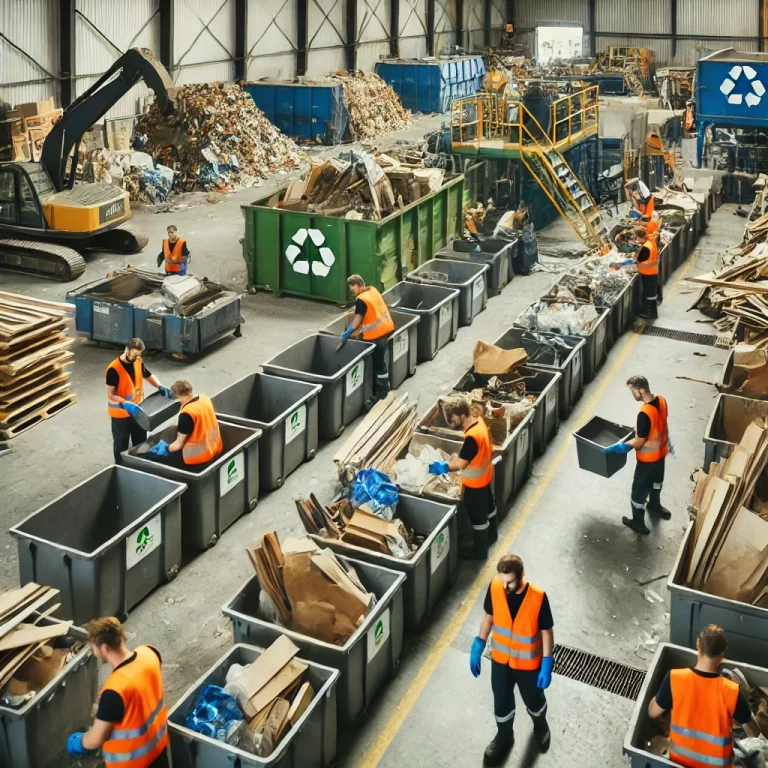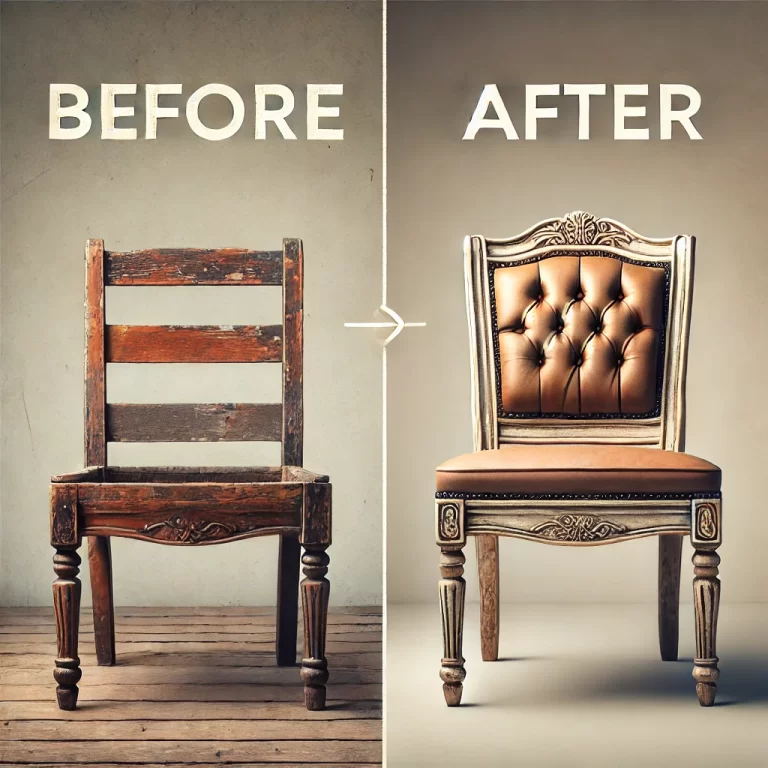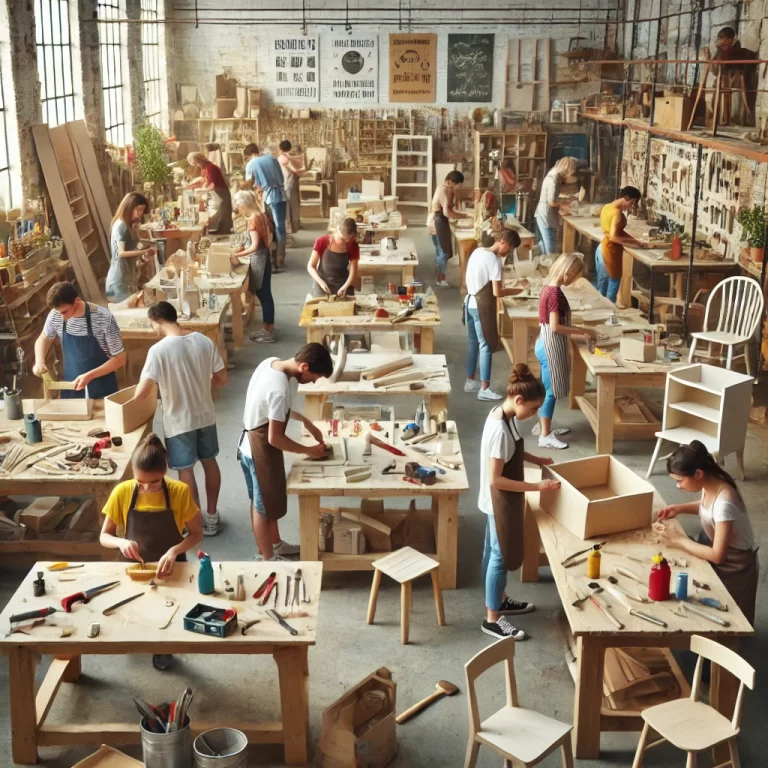7 Best Ways to Dispose Old Furniture in Hong Kong
Introduction
Disposing of old furniture can be a challenging task, especially in a densely populated city like Hong Kong. With limited space, stringent disposal regulations, and a pressing need for environmental sustainability, residents often struggle to manage bulky waste responsibly. Proper furniture disposal is not just about clearing space; it’s about making environmentally conscious decisions that can have a lasting impact on our community and planet.
Furniture waste, if not managed properly, can contribute significantly to landfill overflow and environmental degradation. By exploring effective disposal methods, we can reduce our environmental footprint and promote a circular economy where materials are reused and recycled. This guide provides an overview of seven effective ways to dispose of old furniture in Hong Kong, helping you make informed and sustainable choices.
1. Donate to Charity Organizations

One of the best ways to dispose of old furniture is by donating it to charity organizations. Many charities in Hong Kong accept gently used furniture that can be repurposed for those in need or used in shelters, community centers, or other charitable facilities.
- Steps to Donate:
- Research Local Charities: Start by looking for reputable organizations such as St. James’ Settlement, Salvation Army, or Crossroads Foundation. These organizations often have programs for accepting and distributing donated furniture.
- Contact and Confirm: Reach out to the charity to confirm their current needs and donation policies. Some charities may have specific requirements regarding the type and condition of furniture they accept.
- Arrange Pickup or Drop-off: Many charities offer free pickup services for large items, making it easy for you to donate. Alternatively, you can deliver the items directly to their location.
- Benefits:
- Supports Those in Need: Your donation could provide essential furniture to families or individuals who cannot afford new items.
- Environmental Impact: Donating prevents furniture from ending up in landfills, reducing waste and promoting reuse.
- Tax Deduction: Donating to registered charities can also provide tax benefits, depending on local regulations.
- Considerations:
- Ensure the furniture is clean, in good condition, and free from major damage. Charities generally cannot accept items that are broken, heavily stained, or infested with pests.
2. Sell or Give Away

Selling or giving away your old furniture is another effective way to dispose of it. This method not only extends the life of your items but also provides an opportunity for others to acquire affordable furniture.
- Steps to Sell or Give Away:
- Choose the Right Platform: Platforms like Facebook Marketplace, Carousell, or local expat forums are great for selling or giving away furniture. These platforms have large user bases, increasing the chances of finding interested buyers.
- Create a Compelling Listing: Take clear, well-lit photos of the furniture and write a detailed description, including dimensions, condition, and any unique features. Being honest about the furniture’s condition will help build trust with potential buyers.
- Price Appropriately: Research similar items to set a fair price. If you’re giving away the furniture for free, clearly state this in your listing to attract those in need.
- Communicate Clearly: Respond promptly to inquiries and clarify pickup or delivery options. Arrange a safe location and time for exchanges.
- Benefits:
- Earn Extra Income: Selling furniture can help recoup some of the original cost.
- Reduces Waste: Finding a new home for your furniture reduces the demand for new items and helps conserve resources.
- Community Engagement: Engaging with others in your community can lead to new connections and a sense of camaraderie.
- Considerations:
- Safety is crucial when meeting potential buyers. Always meet in public places if possible and use secure payment methods.
3. Hire a Junk Removal Service

For furniture that is beyond repair or has no resale value, hiring a professional junk removal service is a convenient and efficient option. These companies are equipped to handle bulky items and ensure they are disposed of responsibly.
- Steps to Hire:
- Research Companies: Look for reputable junk removal services that operate in your area. Read reviews and compare services to find one that best meets your needs.
- Request a Quote: Contact multiple companies to get quotes. Make sure to ask about any additional fees or charges that might apply.
- Schedule a Pickup: Choose a convenient time for pickup. Be clear about what items will be removed to avoid any misunderstandings.
- Verify Disposal Practices: Ask the company how they dispose of furniture. Responsible companies will recycle or donate items when possible, rather than sending everything to a landfill.
- Benefits:
- Convenience: Junk removal services handle everything from lifting to transporting, making the process hassle-free.
- Eco-Friendly: Many companies are committed to recycling and donating items, reducing the amount of waste sent to landfills.
- Considerations:
- Costs can vary significantly, so it’s important to compare rates and services. Some companies may charge extra for large items or require you to have items already on the curb.
4. Utilize Government Services

The Hong Kong government provides several services for disposing of bulky waste. Utilizing these services can be an efficient way to ensure your furniture is disposed of properly without incurring costs.
- Steps to Utilize:
- Contact FEHD: The Food and Environmental Hygiene Department (FEHD) offers free bulky waste collection services. Visit their website or call their hotline to schedule a pickup.
- Prepare Your Furniture: Place the furniture in a designated area as instructed by FEHD, usually on the ground floor or curbside of your building.
- Follow Guidelines: Adhere to any specific guidelines provided by FEHD regarding the disposal process to ensure a smooth collection.
- Benefits:
- Cost-Free: This service is free for Hong Kong residents, making it a cost-effective option.
- Prevents Illegal Dumping: Encourages responsible disposal and helps keep public spaces clean.
- Considerations:
- Scheduling might be subject to availability, and there could be a waiting period for collection.
- The service might not cover all types of furniture, so it’s essential to check in advance.
5. Recycle Through Specialized Programs

Recycling furniture helps reduce waste and supports sustainability by reclaiming useful materials. Several organizations in Hong Kong specialize in recycling different types of furniture and materials.
- Steps to Recycle:
- Identify Recycling Centers: Search for centers or programs that accept the type of furniture you have. Some specialize in wooden furniture, while others may handle metal or fabric components.
- Check Guidelines: Ensure your items meet the recycling program’s criteria. This might include disassembling furniture or separating materials.
- Transport to Center: If pickup isn’t available, you may need to transport the furniture yourself. Consider renting a vehicle if necessary.
- Benefits:
- Reduces Landfill Waste: Recycling helps decrease the volume of waste sent to landfills.
- Supports Recycling Efforts: Contributes to the recycling industry, promoting sustainable practices.
- Considerations:
- Not all furniture is recyclable, so it’s important to check with the program first.
- Some recycling centers might charge a fee, especially for items that require special handling.
6. Upcycle or Repurpose

Upcycling furniture is a creative way to breathe new life into old pieces. This method involves redesigning or reworking furniture to create something new and functional, often enhancing its aesthetic value in the process.
- Steps to Upcycle:
- Plan Your Project: Decide what you want to create. Research ideas online through Pinterest or DIY blogs. Consider what materials and tools you will need.
- Gather Materials: Source any additional materials you might need, such as paint, fabric, or hardware.
- Transform Your Furniture: Follow your design plan, taking your time to ensure quality work. Consider attending a workshop or watching tutorial videos for guidance.
- Benefits:
- Creative Outlet: Allows you to express creativity and customize your home.
- Saves Money: Upcycling can be more affordable than buying new furniture.
- Environmental Impact: Extends the life of the furniture, reducing waste.
- Considerations:
- Requires time and effort, and there might be a learning curve for those new to DIY projects.
- Some upcycling projects may require specific tools or skills, such as woodworking or sewing.
7. Use Furniture Exchange Programs

Furniture exchange programs are becoming increasingly popular as a sustainable way to dispose of unwanted furniture. These programs allow you to exchange your old furniture for other items or credits that can be used towards purchasing new or second-hand furniture.
- Steps to Participate:
- Find a Furniture Exchange Program: Research local furniture exchange programs or stores that offer exchange services. Some online platforms also facilitate furniture exchanges between individuals.
- List Your Furniture: Provide details about the furniture you want to exchange, including photos, dimensions, and its condition. This information helps others understand what you’re offering.
- Browse Available Items: Look through the items available for exchange. You might find something that fits your needs or taste.
- Make an Exchange: Arrange a direct swap with another participant or use the program’s credit system to trade in your furniture for something else.
- Benefits:
- Sustainable and Cost-Effective: Promotes recycling and reuse of furniture, reducing waste and saving money.
- Variety of Choices: You may find unique or vintage items that aren’t available in regular stores.
- Community Building: Encourages interaction and exchange within the community, fostering a sense of connection.
- Considerations:
- Make sure to clearly communicate with the other party to avoid misunderstandings about the condition and expectations of the exchanged items.
- Some programs may have specific rules or fees for participation, so be sure to understand all terms and conditions.
Additional Methods
1. Collaborate with Local Artists: Engage with local artists who specialize in using reclaimed materials. Old furniture can be transformed into art pieces or installations, promoting creativity and supporting the local art scene.
- How to Collaborate: Reach out to artists or art schools and propose a partnership. Offer your furniture for free in exchange for them creating art or functional pieces.

2. Rent a Storage Unit Temporarily: If you’re unsure about disposing of certain furniture items, consider renting a storage unit temporarily. This gives you time to decide while keeping your space uncluttered.
- Steps to Rent: Search for affordable storage units in your area. Choose a unit that suits your needs and budget. Ensure it’s accessible for when you want to retrieve or add items.

3. Host a DIY Workshop: Organize a workshop where community members can learn to refurbish or upcycle furniture. This initiative not only helps reduce waste but also imparts valuable skills.
- Steps to Host: Partner with local DIY enthusiasts or craftsmen who can lead the workshop. Promote the event through community centers, schools, or online groups.

Understanding Legal Aspects and Costs
Navigating the legal landscape and understanding the potential costs associated with furniture disposal are essential for making informed decisions. In Hong Kong, improper disposal of furniture can lead to fines and penalties, emphasizing the importance of adhering to local regulations.
- Regulations: The Hong Kong government has specific guidelines for disposing of bulky items. It’s crucial to familiarize yourself with these rules to avoid fines.
- Costs: The costs of disposal methods can vary widely, from free government services to paid junk removal. Consider all options and choose the one that best fits your budget and needs.

Sustainability Focus
Sustainability should be at the forefront of any disposal decision. Every action you take can contribute to a greener, cleaner future. By choosing to donate, recycle, or upcycle furniture, you support sustainable practices and help reduce the environmental impact of waste.
- Environmental Benefits: Reducing waste and promoting reuse conserves resources and minimizes pollution. Every piece of furniture kept out of a landfill is a step toward a more sustainable future.
- Promoting a Circular Economy: A circular economy aims to keep products and materials in use for as long as possible. By disposing of furniture responsibly, you contribute to a system where waste is minimized, and resources are continuously repurposed.

Case Studies and Examples
Including real-life examples and case studies can provide inspiration and practical insights into furniture disposal.
- Success Story 1: A Hong Kong resident successfully donated an entire set of bedroom furniture to a local charity, helping a family in need while reducing waste. The charity was able to furnish several rooms in a shelter, providing comfort to those who had lost their homes.
- Success Story 2: A community garage sale in Sai Kung resulted in the exchange of over 50 furniture items, fostering a sense of community and sustainability. Neighbors who had never met before bonded over shared interests and a commitment to reducing waste.

Conclusion
Properly disposing of old furniture is more than just clearing out space; it’s about making responsible choices that benefit both the environment and the community. By exploring the various disposal methods outlined in this guide, you can find the best solution for your needs while contributing to a greener Hong Kong.
Remember, every piece of furniture has potential value, whether it’s through donation, resale, recycling, or repurposing. Make the effort to choose a sustainable path and help reduce the city’s waste footprint. Your actions today can make a significant difference in promoting a cleaner, more sustainable future for Hong Kong.








